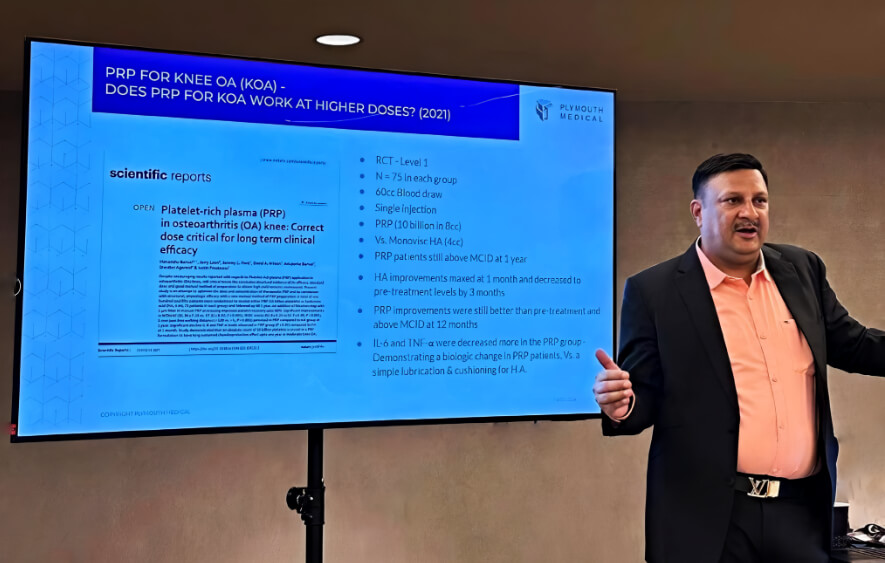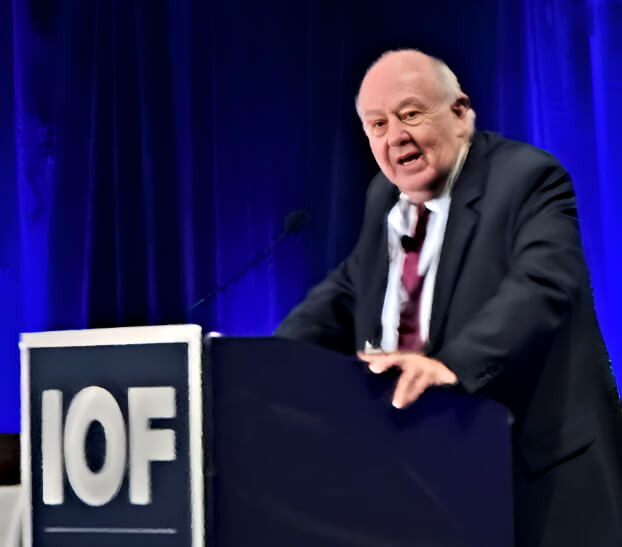I’ve just returned from the premiere conference in the musculoskeletal regenerative medicine space. The Interventional Orthobiologics Foundation hosted its 10th annual conference last weekend in Scottsdale, Arizona. Being from the Northwest, a little Arizona warmth and sunshine was appreciated and the conference happened to coincide with Major League Baseball Spring Training. There were plenty of Seattle Mariner fans around the Scottsdale area, but the biggest news was Kevin Kostner being at the games. Anyway, the only time I made it outside of the hotel was late in the evening and once during a lunch break, but it was right in the middle of “haboob;” a particularly strong wind that results in a dust storm. The good news is that the conference kept me engaged and had a lot of useful information. I wanted to share some of my main takeaways from the conference:
1. The more platelets in the platelet rich plasma (PRP), the better the result of a PRP injection.
I have been doing orthobiologics (using biologic therapies such as platelet rich plasma and microfragmented adipose tissue cellular graft therapies for musculoskeletal conditions) for almost a decade. Over this decade I have treated thousands of patients, and I’ve also seen the results of my colleagues, so I’ve seen the outcomes of many patients over the years. I’ve always contended that the patients that I give the highest dose of platelets seem to do best with their PRP procedure, regardless of their age or the severity of their condition. Clinical experience is one level of evidence, but there is more and more data with higher levels of evidence supporting that what I have observed in my patients tends to be true across the board. In fact, I had posted a video suggesting that a starting blood draw volume for a PRP procedure should be at least 120 cc of if your practitioner is not drawing that much, then you probably are not getting a very good PRP (the more platelets you start with the whole blood draw, the more you can have in the final platelet dose for the therapeutic injection…and in my experience the more the better). I had several people criticize this at the time, but now with these newer studies, it’s proving me right!
At the conference, Dr. Himanshu Bansal presented data that a PRP dose of 10 billion platelets resulted in better outcomes for knee osteoarthritis than doses less than 10 billion. Yet this is not the end of the story. He also showed that patients that had 20 billion platelets dosed, did better than the 10 billion.

As with anything in medicine, dose matters. In the past, and currently, there is concern that at a certain point too many platelets might be counterproductive. With any therapeutic agent there is a dose response curve. There is a window where the dose may be too low to have any benefit. Then there is a window where the dose is exactly right to accomplish the goal. If you go higher than this dose, the benefits may either plateau or even turn from benefit to harm. The concern with platelet dosing has been that if we dose over that plateau, we may be inadvertently going too far. At the conclusion of this regenerative medicine conference, I’m convinced that we have not found what the plateau of platelet dose should be, but what is clear, the more the better.
Dr. Bansal’s work was completed in India and independent of another presenter’s work, Dr. Berrigan. I’ve collaborated with Dr. Berrigan with some of my musculoskeletal ultrasound projects. Dr. Berrigan and his co-authors wrote a very important review article. What they found was that if a patient received an injection of PRP with less than 5 billion platelets total in the injection, then they did not have a good outcome from the PRP. The patients who had 5 billion or more had superior results. The injections were done on tendons, ligaments, and joints. What they found is that for tendons, the dose needs to be at least 5 billion. For joints, if the dose was 10 billion or more, the patients had better responses.
To sum up as quick as I can some very nuanced studies, the more platelets the better for now and here at Oregon Regenerative Medicine we have a flexible lab platform that allows your doctor to customize a platelet dose that is appropriate for you and what you are having treated. We have a blood cell counter that gives us a baseline platelet count and then a PRP platelet count that we can then use to calculate the total platelet dose to ensure we are delivering a high quality PRP that will have a high platelet dose and be more likely to result in a great outcome.
2. Ultrasound guided lipoaspiration for microfragmented adipose tissue graft results in better stem cells than manual lipoaspiration.
Here’s another one that I’m happy to be proven correct. For years I’ve used direct ultrasound guidance to visualize my lipoaspiration. In fact, I’ve presented on this topic and technique at international regenerative medicine conferences. I’ve had studies showing where the cells we want are, how with ultrasound you can view the gross anatomy where those cells are, and with ultrasound you can have a better patient experience. Now, soon to be published, we have evidence that the tissue harvested with ultrasound guidance results in much more colony forming units (CFUs) than tissue harvested manually without ultrasound guidance. CFUs are a way to measure the number and quality of stem cells harvested from lipoasirated adipose tissue. Many clinicians do not use ultrasound to harvest the adipose tissue, that’s just how they were trained, but now we have objective evidence that using ultrasound guidance to harvest the tissue results in much more and healthier cells.

3. Patients with knee OA prefer autologous cellular therapy to total knee replacement.
One of the “godfathers” of regenerative medicine is a French surgeon named Dr. Phillipe Hernigou. It is always an honor to hear him speak. He’s been using cell therapy for over 50 years and has kept meticulous records. Not only does he have over 50 years of safety data, but he also has 40 years of outcomes.
One thing that really caught my attention was that over 50 years, even with the advancements in technology and robotic assistance, 25% of patients who elect to have a total knee replacement are unsatisfied with it. When compared to patients who have had regenerative medicine injections, very few are dissatisfied and for those that it did not work for, they still say they would have done it again. But what really blew my mind is that Dr. Hernigou has a cohort where the patients had bilateral knee osteoarthritis. They intentionally replaced one knee, yet did a regenerative medicine on the other knee. The patients that had the regenerative medicine treatment reported better outcomes, even long term, than those with the knee replacement and patients much preferred the regenerative medicine treatment to the knee replacement.
In conclusion, these regenerative medicine conferences are always nice, but the silver lining is that the key take aways are already things that we are doing here at Oregon Regenerative Medicine and even though we’ve been doing this a long time, we remain on the forefront of offering the best and most up to date evidence based regenerative medicine.
Dr. Manning is recognized internationally for his expertise in diagnostic and interventional musculoskeletal ultrasound and serves as a subject matter expert in the field. Dr. Manning is president and a founding member of the Naturopathic Orthopedic Medicine Academy, board member of the Oregon Association of Naturopathic Medicine, member of the Interventional Orthobiologics Foundation, and serves on the Oregon Pain Management Commission. From professional athletes to weekend warriors or those with persistent pain, Dr. Manning delivers individualized care and exceptional outcomes. He practices at Oregon Regenerative Medicine, teaches at the National University of Natural Medicine, and trains and consults other providers at Regenerative MSK Consultants. In 2024, Dr. Manning was awarded the inaugural Rising Star Award from the Oregon Association of Naturopathic Medicine, highlighting his excellence and leadership within naturopathic medicine in the state of Oregon.



